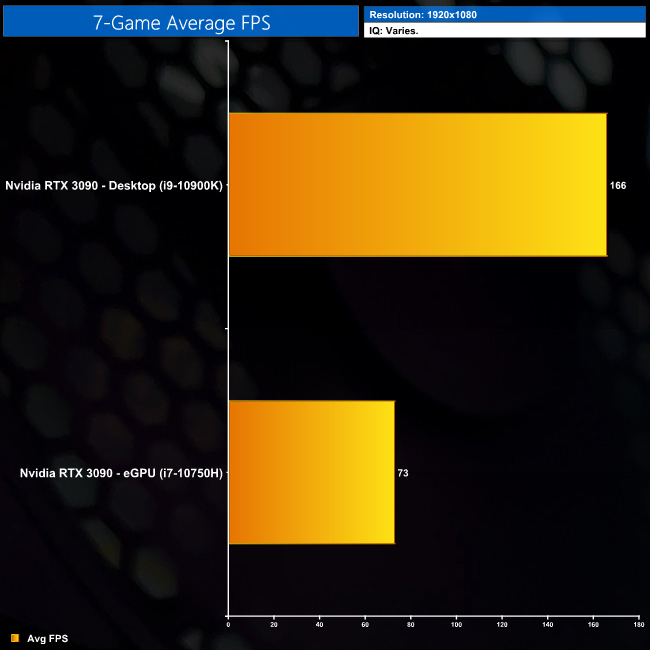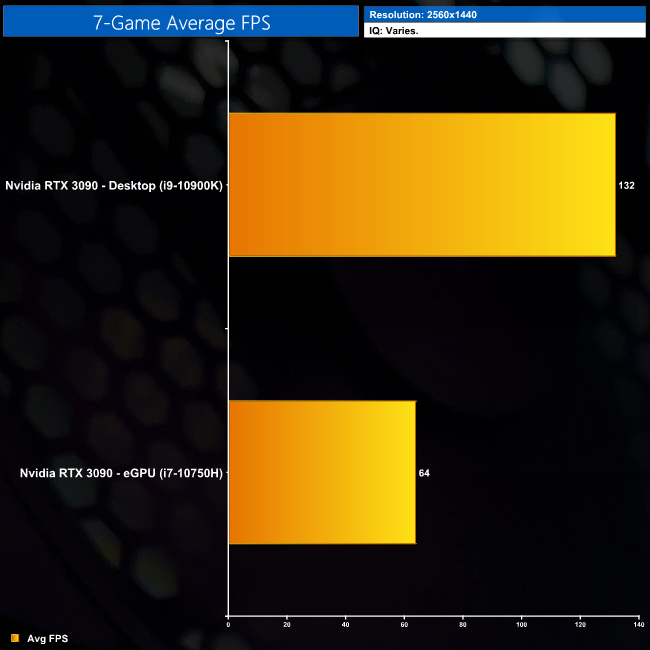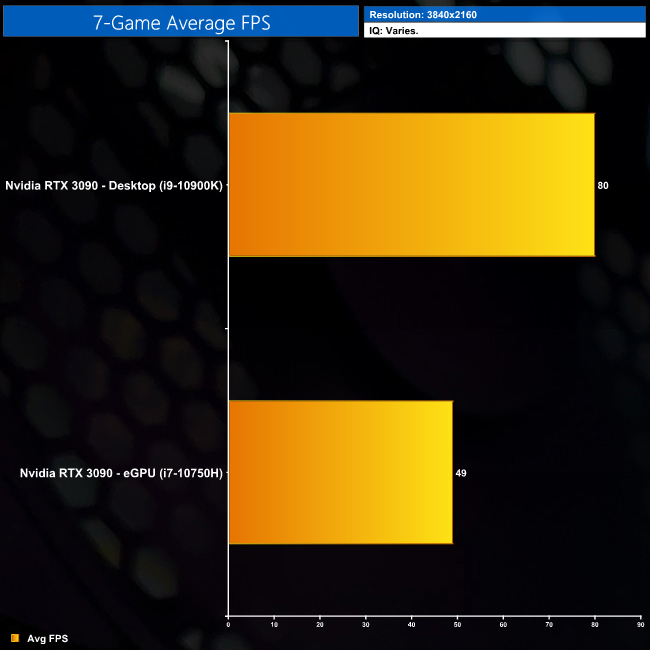It's also worth examining how much performance is lost when using an eGPU, as opposed to a proper desktop system. To do so, we benchmarked the RTX 3090 in our regular GPU test system, in the same 8 games as shown earlier, with the same image quality settings and using the same benchmark runs.
Of course, this is isn't a direct apples-to-apples comparison, as our desktop system using the 10-core i9-10900K, while the Razer Blade 15 Base uses a 45W mobile processor. What this testing does show however, is how much performance is being left on the table, when using the RTX 3090 in combination with a mobile CPU and a limited PCIe interface.
Instead of going over results for each game, here we present average figures for all of our games when testing at 1080p, 1440p and 4K. We're showing data for the RTX 3090 eGPU when tested with an external monitor.
At 1080p, it’s a bit of a bloodbath. The RTX 3090 averaged 166FPS on our desktop system, compared to 73FPS with the eGPU and Blade 15. That means we’re losing 56% performance going with the eGPU instead of a proper desktop setup.
And then at 1440p, the RTX 3090 in our EG200 averaged 64FPS. Our desktop system however, it averaged 132FPS, so once again, the eGPU RTX 3090 loses over half the performance when compared to a desktop PC.
The margin isn’t quite as punishing at 4K, though. The RTX 3090 desktop system averaged 80FPS, compared to 49FPS in the eGPU, meaning we’re looking at 39% worse performance for the EG200. The main reason for that would be CPU limitations are much less of a factor for 4K gaming, but even still, our external GPU setup is significantly slower than a desktop PC with the same graphics card.
 KitGuru KitGuru.net – Tech News | Hardware News | Hardware Reviews | IOS | Mobile | Gaming | Graphics Cards
KitGuru KitGuru.net – Tech News | Hardware News | Hardware Reviews | IOS | Mobile | Gaming | Graphics Cards





